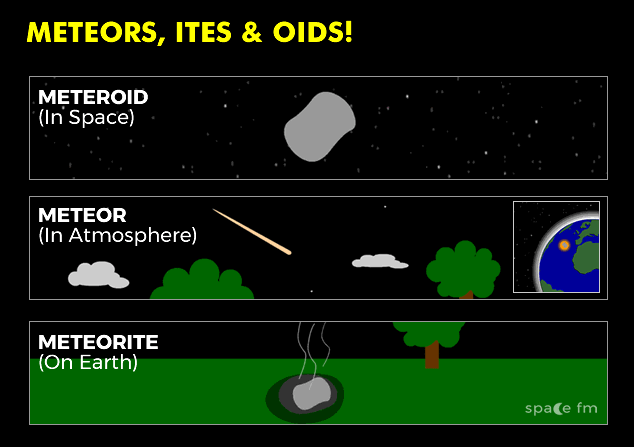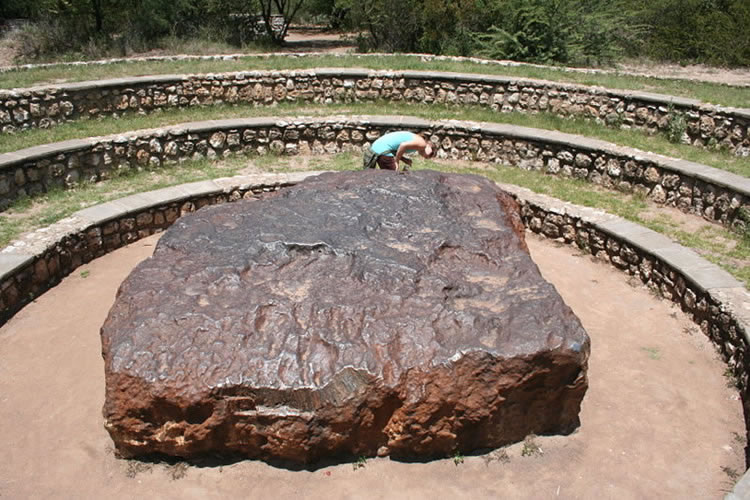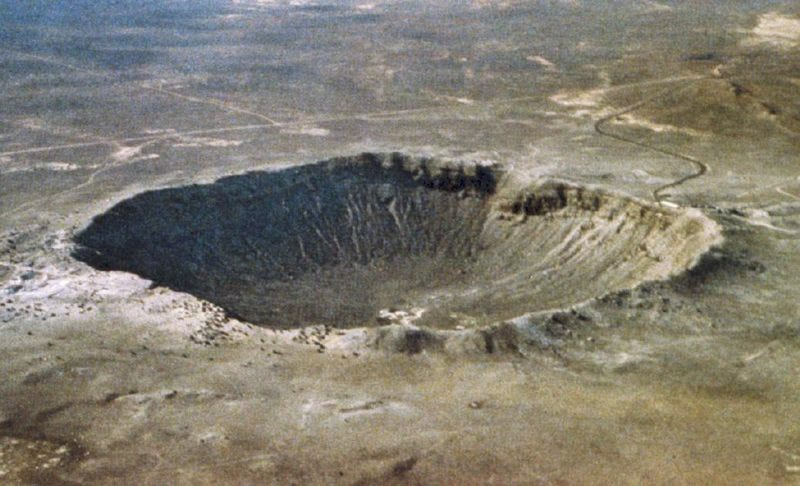Meteoroids, Meteorites & Micrometeorites
11.1 - Be able to use data about the names and relative locations of bodies in the Solar System, including:c) Small Solar System Objects (SSSOs): asteroids, meteoroids
11.10 - Understand the origin and structure of meteoroids and meteorites
Meteoroid
A meteoroid is an object in space, possibly similar to an asteroid that will eventually become a meteor. There are two main kinds of meteoroid:
- Cometary meteoroids which are small particles shed by comets
- Asteroidal meteoroids which are particles fallen off or chipped off asteroids
There are also those that have their origins from other planets and larger bodies. Impacts on Mars has thrown up Martian debris into space and have landed on earth.
Meteor
A meteor is a meteoroid that enters Earth's atmosphere. They can be observed at night time when they can be seen as a streak of light across the sky. They are popularly known as SHOOTING STARS.
Earth's atmosphere burns up the meteoroid because the high speed of the object produces immense friction and typically the object is vaporised.
Very bright meteorites are large and can even be seen in the day-time sky as a fireball.
Meteorite
If a meteor survives the entry into Earth's atmosphere it will land as a meteorite.
About 10% of meteors survive to hit Earth’s surface and land as meteorites, having not been burnt up by Earth’s atmosphere.
Most are not observed and fall into the oceans, deserts or less populated areas. Typically they are made of stone or iron, and their exteriors are often smooth due to the crust melting through the atmosphere.
A meteorite collision is thought to have caused mass extinctions of life on Earth in the past. There are few large craters on Earth’s surface as they are usually covered over by geological processes such as the weather, earthquakes etc. The most famous crater is Barringer Crater, shown on the right in Arizona, USA.
A micrometeorite is a micrometre-sized meteorite. There are more micrometeorites that hit Earth than any other type, as there are more in space and also they are too small to be burnt up in the Earth’s atmosphere. Instead, they drift downwards through the atmosphere.
Questions
Describe the following terms, saying where they are to be found, their appearance and what they consist of:
- Meteoroid
- Meteor
- Meteorite
- Micrometeorite
Links
- Accuweather Why do meteors glow in vibrant colours?
- Solar views Meteors and Meteorites
- Teacher Source Micrometeorites



 | © All Rights Reserved |
| © All Rights Reserved |